Introduction To Video Sound Design
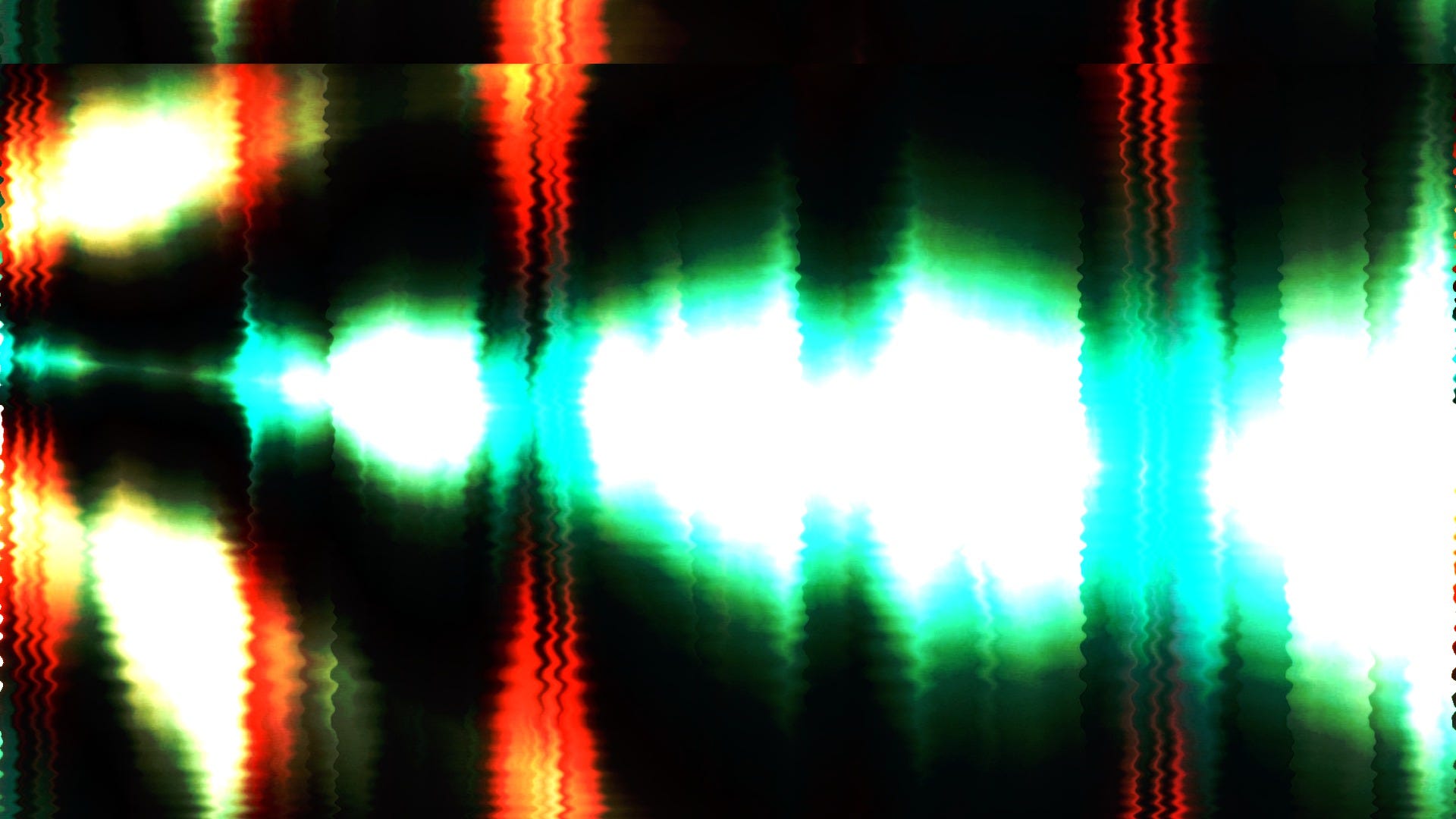
So What Is Sound Design?
A short introduction to its background
![]()
There weren't always sound designers. They didn't exist in the 19th Century or even for most of the 20th Century. And in a few years, very few sound design students will even have been born in the 20th Century, which will make the origins of Sound Design seem like ancient history!
Sound design is a relatively new field, newer than film, video and games even. The author of this article was born in 1971, so he is even older than sound design.

There is a little bias in this claim as to sound design's origins, because I am grounding this term in its film soundtrack context. The term 'sound design' also started to be used in the late 60s in live theatrical productions, since the sound effects for plays were able to become more complex with the widespread introduction of analog audio tape decks. In music, sound design is often associated with an album's 'producer' who imparts a distinct or unique sound to a song through audio engineering technologies and mastering techniques.
In film, the two names most associated with sound design are Ben Burtt and Walter Murch. These are interesting names because they represent so-to-speak two opposite ends of the creative spectrum, what we can call top-down and bottom-up sound design.
Murch usually gets credit for being the first person with official sound design film credits, as the "individual ultimately responsible for all aspects of a film's audio track, from the dialogue and sound effects recording to the re-recording (mix) of the final track" (source). This is top-down sound design, where the sound designer has responsibility for the totality of the film's soundtrack elements and its mix. In this capacity, a sound designer is analogous to a film director or cinematographer, being the 'boss of all sound' more or less.
With bottom-up sound design, the focus is more on the crafting of unique individual sounds, through recording techniques, interesting objects chosen for their sonic qualities, and specific actions performed for articulating their sounds over time. Ben Burtt's work on sci-fi films like the Star Wars franchise is representative of this orientation to sound design, where the interest is in making highly bespoke sounds, so that, for example, droids can have their own identifying beep language, or the sound of light sabers becomes a sonic element that is memorable and emotionally affective.

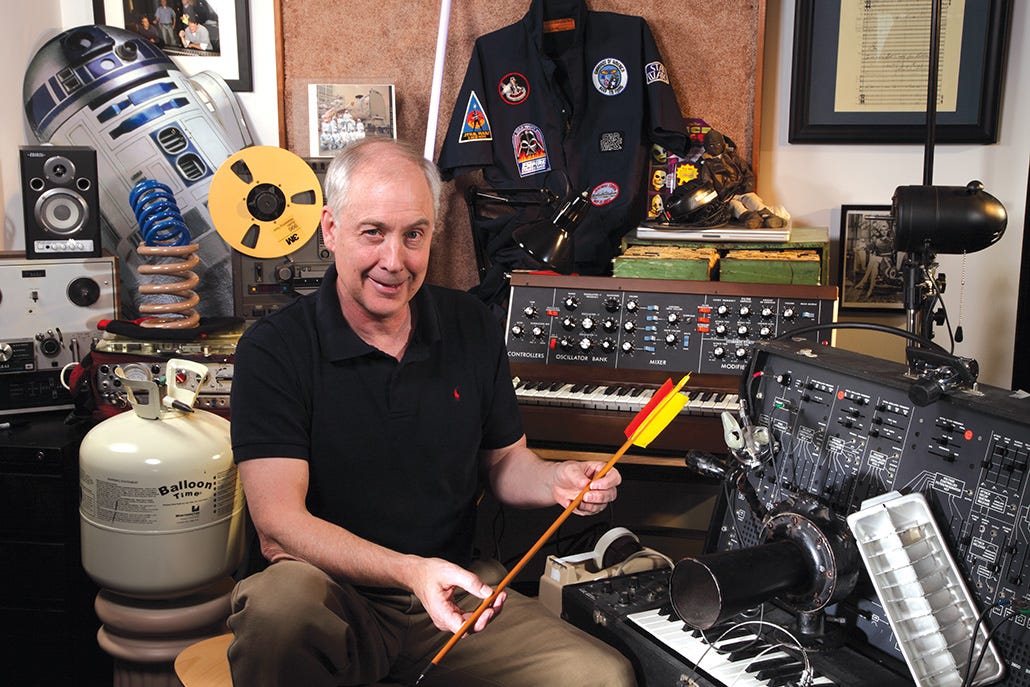


Murch and Burtt were part of the 'Hollywood North' crew of filmmakers who established themselves in San Francisco to be a bit more independent, more creative and less subject to the corporate film studios of LA. Francis Ford Coppola and George Lucas were amongst the well-known directors of this alternative-to-Hollywood group of film creatives.
Dolby Stereo
The technical innovations associated with Dolby Stereo have a lot to do with the emergence of a professional field to be called 'sound design' in film. Dolby's original patents were in the area of noise reduction in music media such as cassettes and vinyl records, which helped with eliminating the hiss and crackle of those analog media.
Note that in the context of film, 'stereo' refers to four-channel sound, not the two-channel sound that we are used to with headphones and inexpensive consumer electronics. Dolby is an IP company (intellectual property). It's business strategy is to develop new technologies, patent them and then license the IP out to many other manufacturing companies as its main revenue stream. Thus, you will often see the Dolby logo all over the place in film and music, both with content and equipment.


Prior to Dolby soundtrack innovations, film audio was noisy and even crackly. The dynamic range was poor —this refers to the difference in decibels between the medium's capacity to render the loudest and quietest sounds. The frequency range was not so great — this has to do with the rendering of the lowest to highest pitches. Generally, sound in film wasn't surround sound — in fact, what's called the Mono Era in film lasted from the 1920s through the 1970s, dominating cinema sound for half a century. The main exceptions to mono sound were the Disney Fantasound theaters in New York and LA, which was an early form of surround sound.
Early film sound was recorded directly onto the film strip as patterns of light waves, a technology that was later replaced by magnetic strips alongside the film images, and eventually by digital encoding. Here's a charming short documentary showing how optical soundtracks were made.
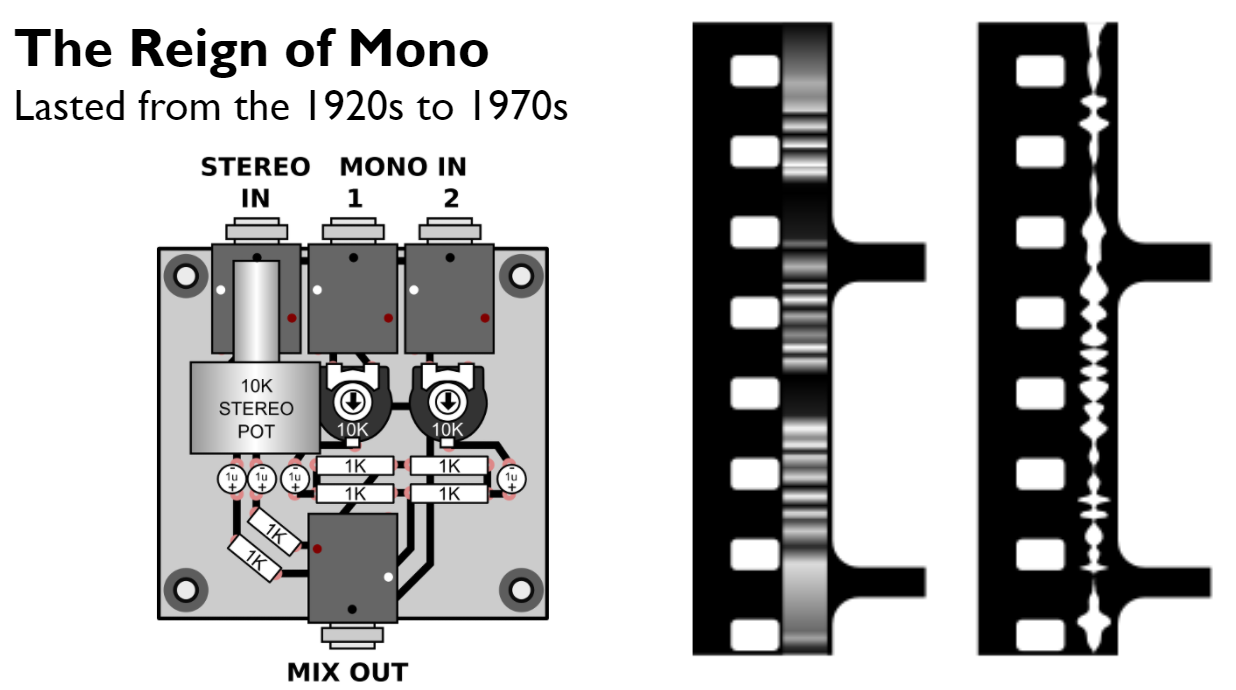
Two-channel audio still makes a lot of sense today, because we only have two ears and headphones or computer speakers are a sufficient form factor for our auditory system's left-right sensitivity. Through virtual sound technologies using HRTFs (head-related transfer functions), spatial 3D effects can be produced in 2D headphone-based listening environments, so today we can get more spatial accuracy and expressivity out of two speakers than in years past.
At the time of this writing, vinyl record music sales are greater than CDs! There is a wide global resurgence in analog media, so it is becoming increasingly relevant to learn more about it. Two-channel stereo technology first arrived in music LPs (records). Because there was a finite amount of space on which to cut grooves in a spinning disc, stereo was a good format for rendering left-right audio information on either sides of the etched record groove, shown below.

Today, sound design encompasses many kinds of practices across Linear, Interactive and Embedded systems. Your car beeps, your film explosions, your game's Ambisonic score — all of these relate to sound design in a contemporary sense.

With Dolby Stereo technologies becoming widespread and affordable in the 1970s, film sound artist found they had a greater degrees of freedom compared to earlier film years. Dolby was also very clever with pricing its technologies low so that it could be more widely adopted, as previous improvements to film's sonic experience failed to catch on because they were too expensive for every last neighborhood theater to adopt.
With Dolby's changes to the soundtrack, and all that hissy static noise gone (or most of it), with the capacity to reproduce very subtle quiet sounds and also much louder ones, with bassier basses and higher high notes, and with better spatial articulation of moving sounds around the theater space — there was a lot more that sound makers could do for the film's soundtrack beginning in the mid-70s.
Those people with a keen interest in exploring these expanded sonic possibilities of the Dolby-enhanced soundtrack would often become known as the sound designers. Of course, prior to Dolby, the film and television worlds were full of various sound creatives. Foley artists, recording mixers, sound editors, field recorders, production sound crew, sound effects makers and composers — there were many whom we might retrospectively call sound designers in a looser sense.
Sound effects work, for example, was often performed live by a crew of prop wielders on the opposite side of the screen. This historical note provides a charming way to end this short introduction to the origins of the sound designer in what today we might more generally call audiovisual media, by way of some amusing illustrations from the archive.
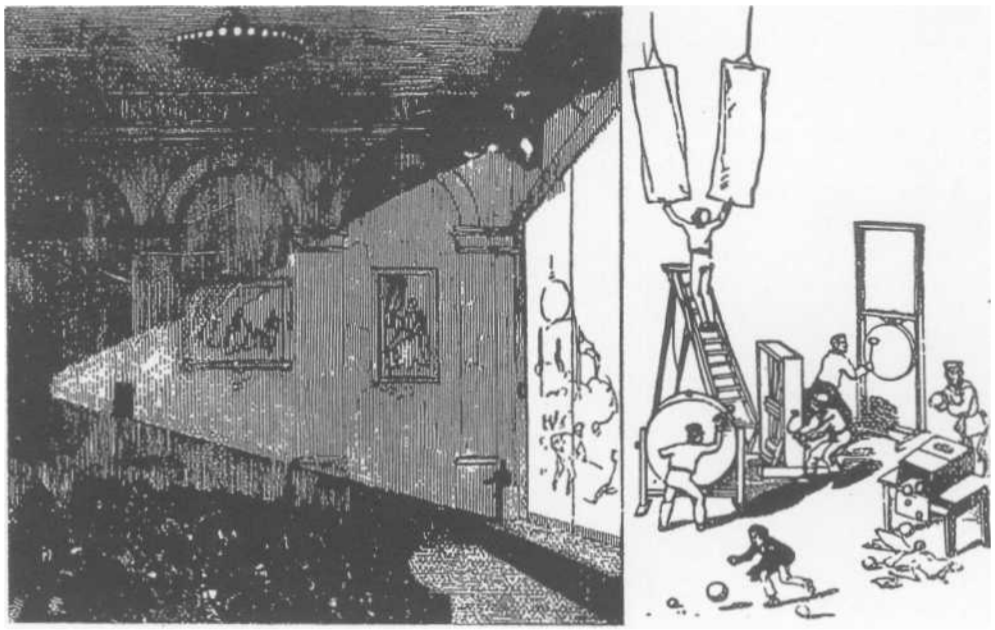
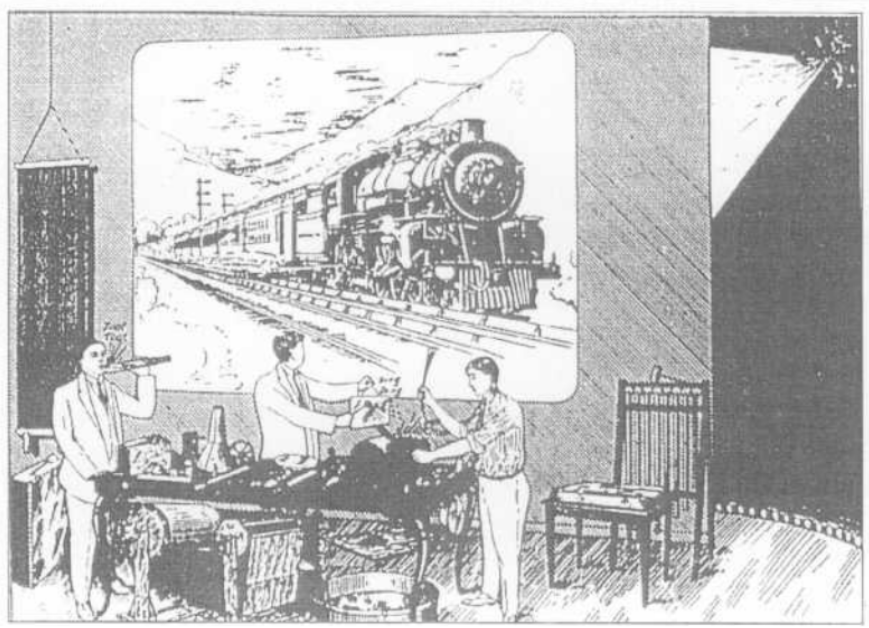

Introduction To Video Sound Design
Source: https://soundand.design/so-what-is-sound-design-4441b5db3a1c
Posted by: harrisonriseed.blogspot.com

0 Response to "Introduction To Video Sound Design"
Post a Comment